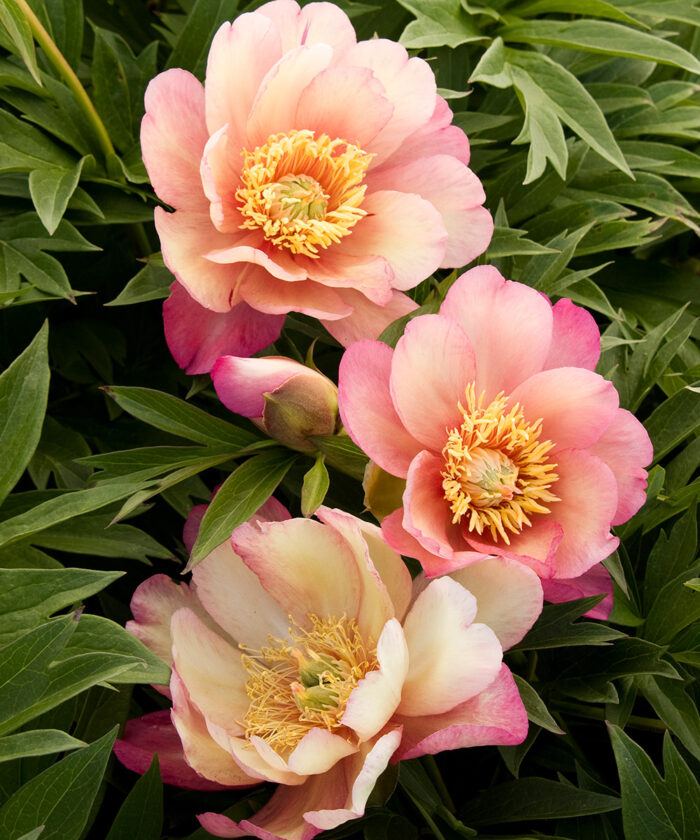
What exactly is an Itoh peony? Itoh peonies were first developed by Toichi Itoh, who experimented for many years with crossing tree peonies (Paeonia suffruticosa cvs., Zones 4–8), which are known for their enormous flowers and beautiful foliage, with herbaceous peonies (Paeonia spp. and cvs., Zones 3–8), which have compact growth habits and are winter dormant. The idea was to create a fabulous new hybrid combining the best flowers, foliage, and growth habits of each group of peonies.
Dense growth habits and abundant, large flowers solve some of the problems of traditional peonies
That mantle has been taken up by botanists and breeders all over the world since Dr. Itoh, and these peony hybrids—also called intersectional peonies—are now known as attractive, 3-foot-high and wide, mounding plants with vigorous and busy growth habits. They have dark green, deeply dissected foliage and long-blooming, late-spring displays of enormous (up to 9 inches across), sweetly scented flowers that come in a rainbow of hues.
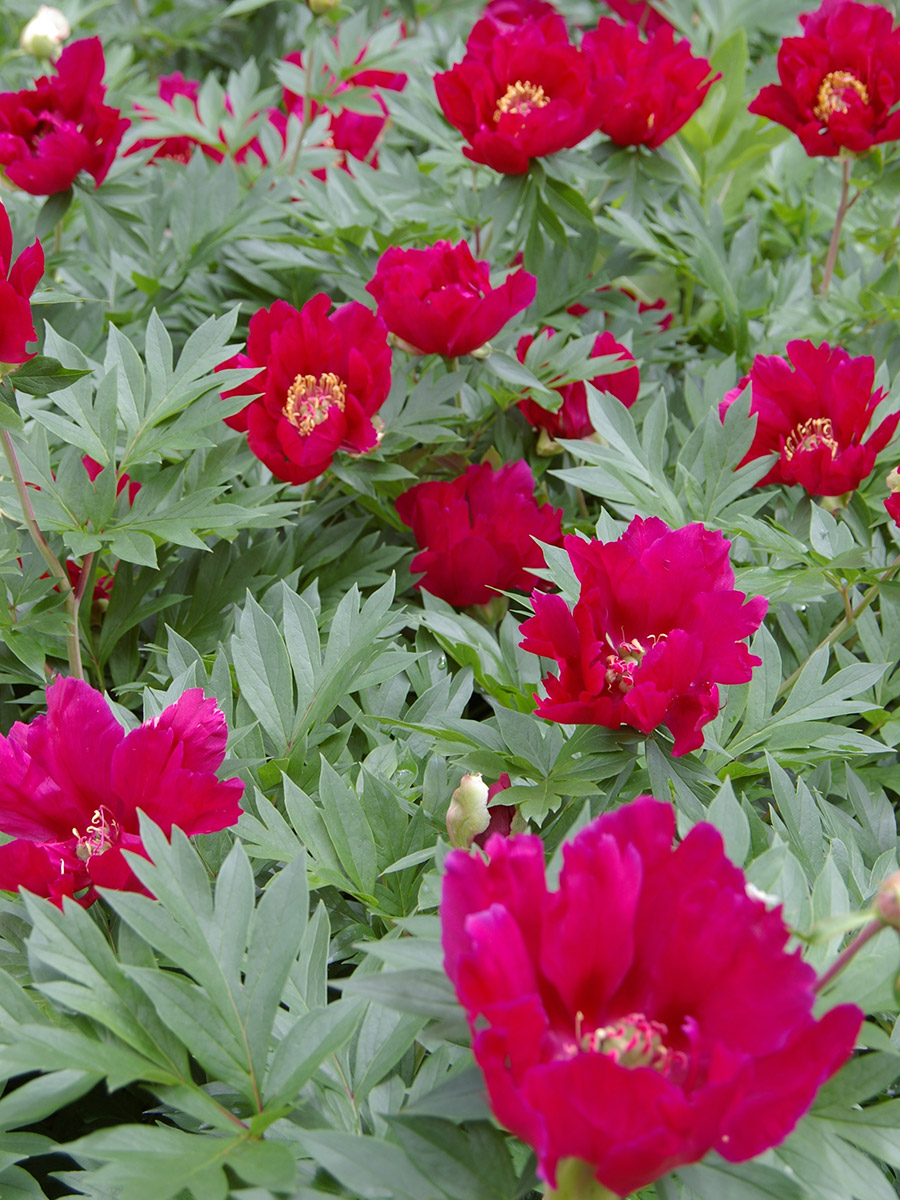
Better performance and easier maintenance make these peonies stand out from the crowd
Itoh peonies develop their first flowers from the terminal buds, and just as these begin to fade, the side buds burst into bloom, making an established plant a veritable flower factory, with often more than fifty of blooms produced in a single season! They’re gorgeous, fast-growing, easy to care for, cold hardy yet heat tolerant, adaptable, and less fussy in general than your average herbaceous peonies. Butterflies love them, deer tend to avoid them, and even a novice gardener can grow them successfully. With their sturdy stems, they require zero support; plus, there’s no need to fake a frigid winter by dumping bags of ice on their dormant crowns. They’re the perfect peony choice for Northern California cutting gardens or perennial borders.
My favorite varieties
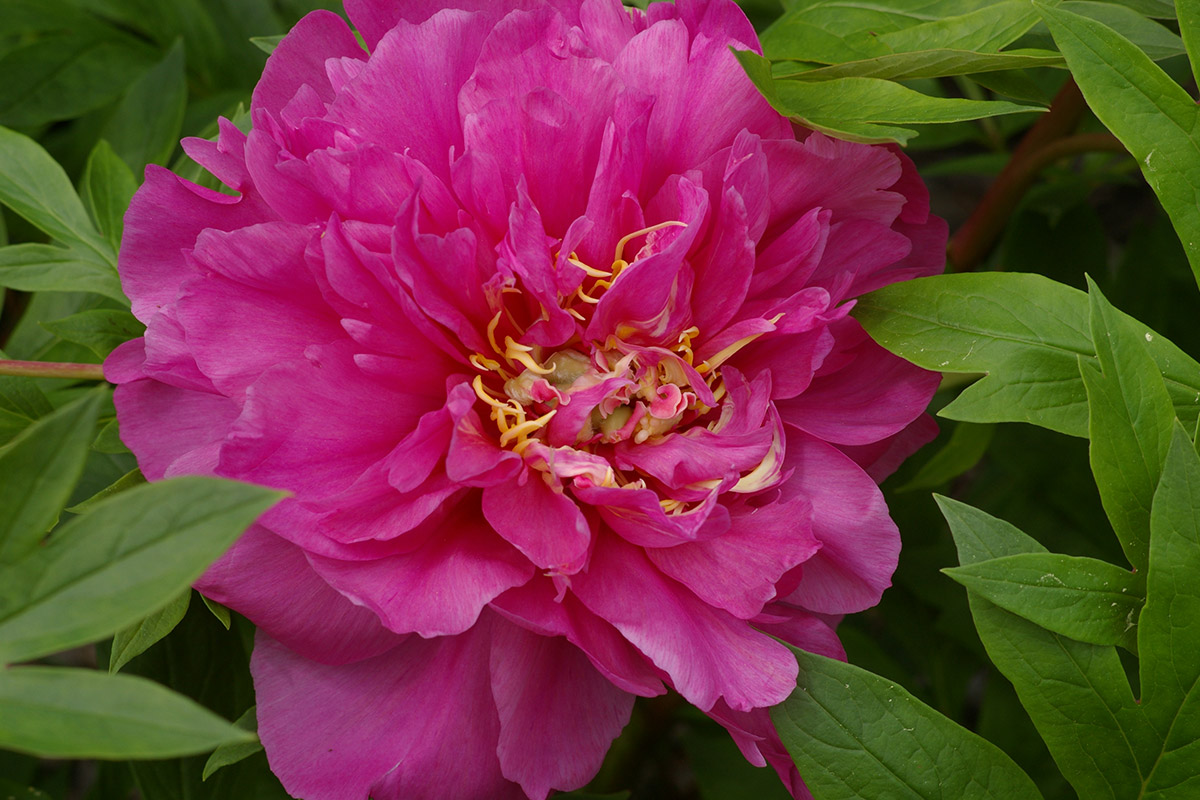
‘Belle Toulousaine ‘
P. × ‘Belle Toulousaine’, Zones 3–9
The blooms of ‘Belle Toulousaine’ grow 8 inches in diameter. They are vibrant, ruffled, deep pink double blooms that are blushed with violet. The fragrance is spicy sweet, and the view is phenomenal in any late spring garden border or bouquet.
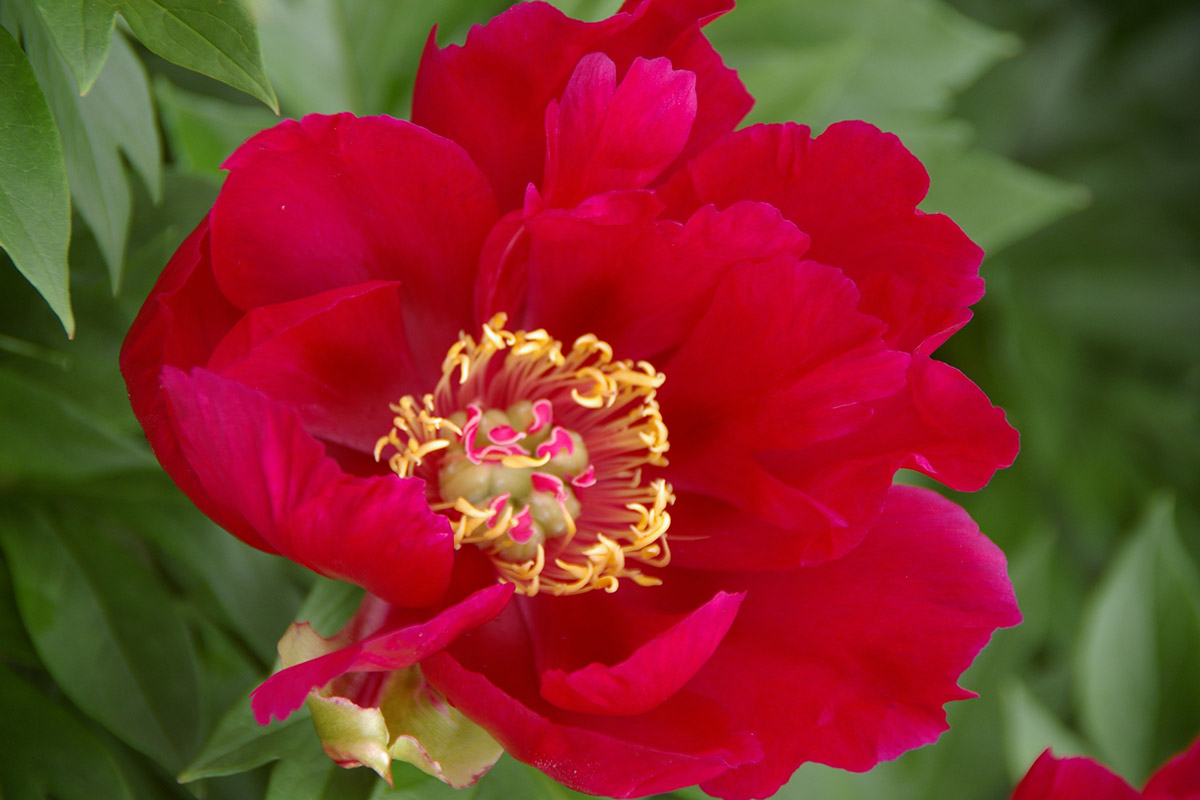
‘Scarlet Heaven’
P. × ‘Scarlet Heaven’, Zones 4–9
‘Scarlet Heaven’ peony’s double layer of dark scarlet petals contrasts beautifully with the central cluster of its golden stamens. The flowers are 7 to 9 inches in diameter, and these semi-double blooms are so abundant that they practically smother the vigorous foliage during peak bloom.
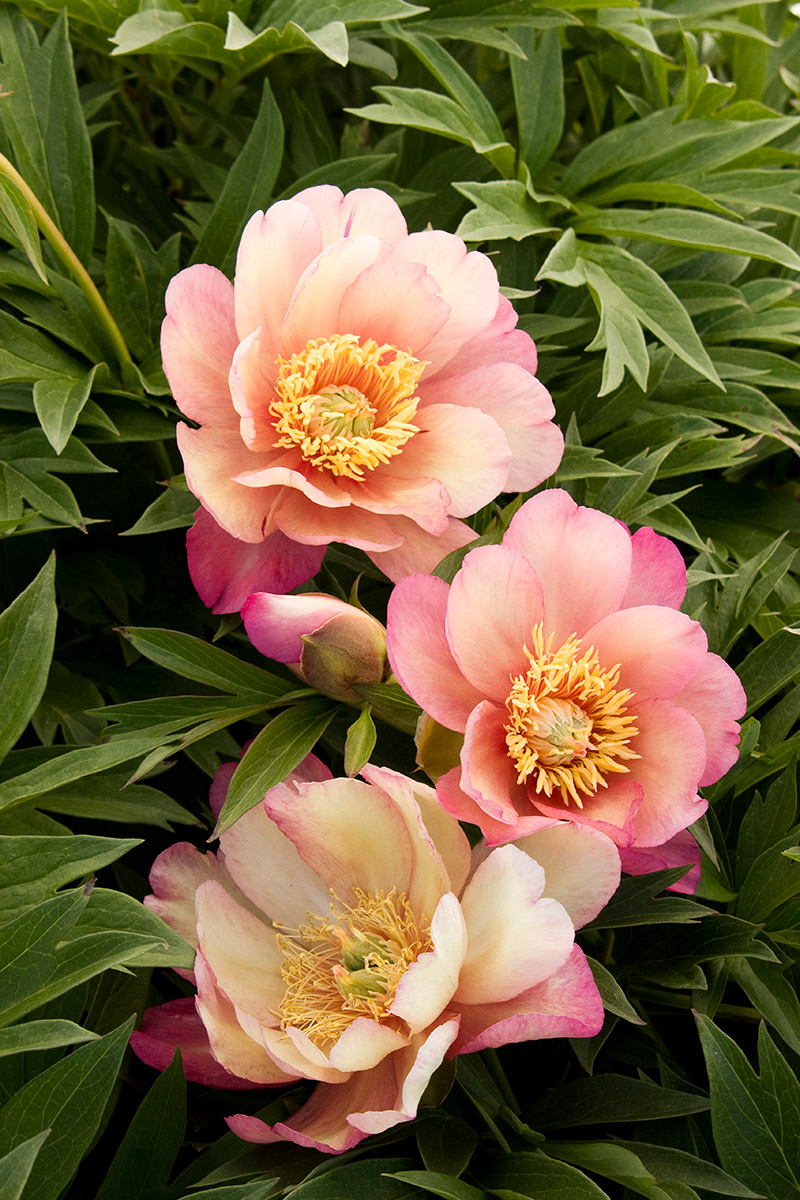
‘Julia Rose’
P. × ‘Julia Rose’, Zones 3–9
The cherry red buds of ‘Julia Rose’ open up to reveal 4- to 6-inch-wide, semi-double, cup-shaped blooms that are soft apricot blushed with dusky pink. These flowers are sweetly scented and centered with a cluster of ruffled gold stamens. They look old-fashioned and lovely. This plant is very productive.
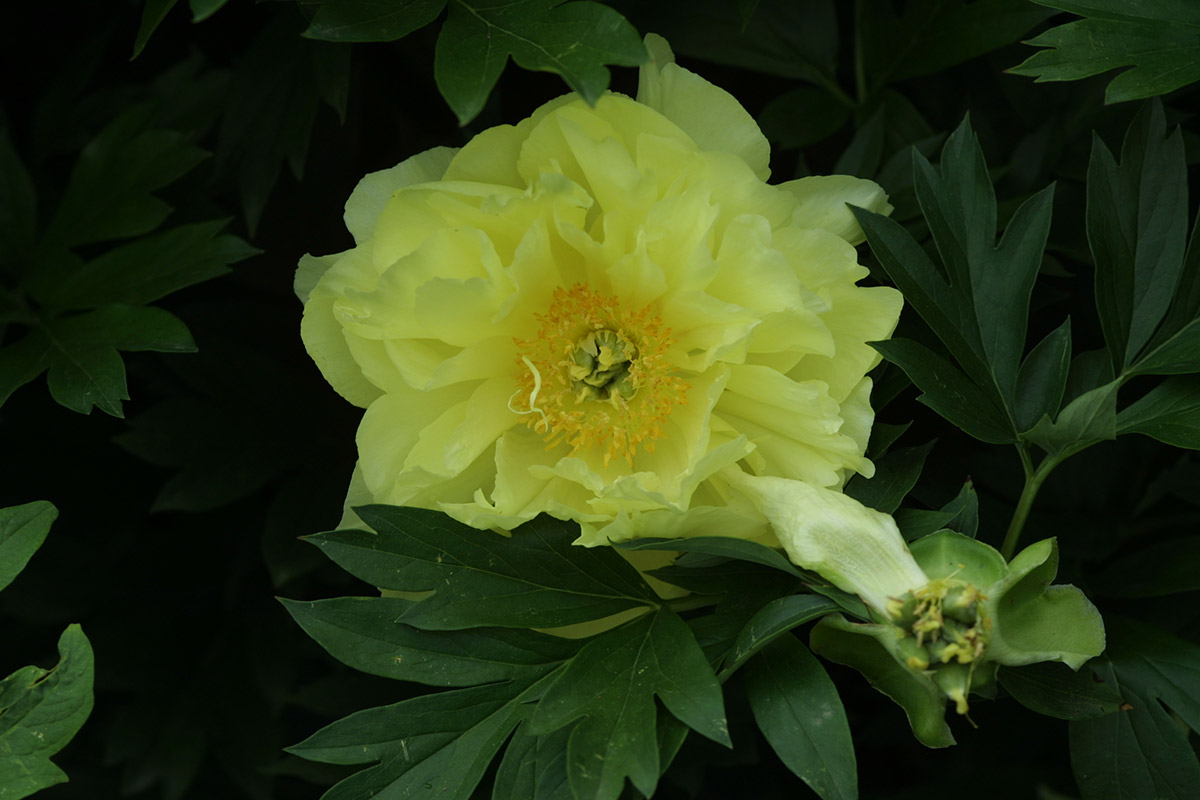
‘Bartzella’
P. × ‘Bartzella’, Zones 4–9
The flowers of ‘Bartzella’ are 6 to 8 inches in diameter and bright butter yellow in color. These fluffy blossoms are brushed with scarlet at their centers and have a pleasant, slightly spicy scent. This is a particularly cheerful, very robust variety!
Planting and growing your Itoh peony
Container-grown Itoh peony plants are most readily available in your local nursery in early spring and can be found in nurseries or at various online sources in bareroot form in fall. Either way, plan on growing your Itoh peony in a location shaded from the summer sun’s hottest afternoon rays. Plant in rich, well-drained, amended, slightly acidic soil, with the top of the root ball (or crown if bareroot) level with the soil. Water regularly during the growing season, and feed with low-nitrogen, high-phosphorous fertilizer (5-10-10 is good) as the first leaves emerge in spring, then again in summer when flowering is over. In late fall, cut all spent foliage to the ground. Fresh new growth will emerge the following spring.
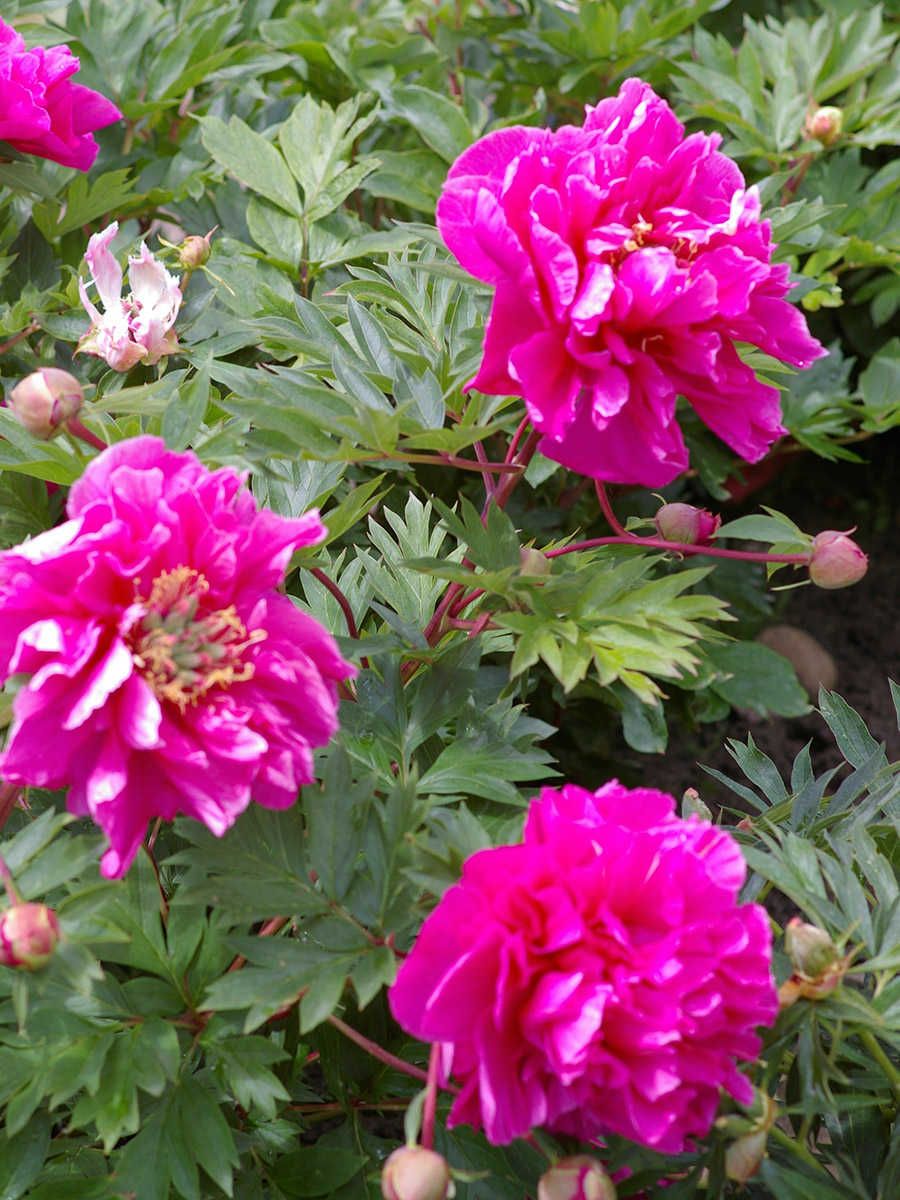
Cutting flowers for bouquets
All Itoh peonies make sensational cut flowers and are outstanding in any arrangement. When harvesting for bouquets, be sure to cut your Itoh peonies during the cooler early morning or late evening hours. You can cut and bring your blooms indoors at any stage of flowering, but for the longest vase-life, cut the blooms before they open up and are still at the bud stage. The stems should be 12 to 16 inches long, and each bud should feel like a soft marshmallow. Remove all side buds and foliage, and pop the stems straight into a vase as soon as possible after cutting. And enjoy!
For more on peonies, listen to Let’s Argue About Plants: Perfect Peonies, or read up on tree peonies.
—Fionuala Campion is the owner and manager of Cottage Gardens of Petaluma in Petaluma, California.
Fine Gardening Recommended Products

Planting in a Post-Wild World: Designing Plant Communities for Resilient Landscapes
Fine Gardening receives a commission for items purchased through links on this site, including Amazon Associates and other affiliate advertising programs.

The Nature of Oaks: The Rich Ecology of Our Most Essential Native Trees
Fine Gardening receives a commission for items purchased through links on this site, including Amazon Associates and other affiliate advertising programs.

Lee Valley Garden Knife
Fine Gardening receives a commission for items purchased through links on this site, including Amazon Associates and other affiliate advertising programs.




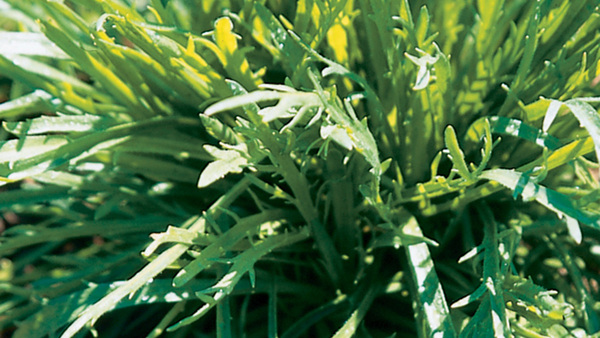














Comments
Everything is very open and honest, and the challenges are broken down in great detail. The information is certainly useful to have. Is my website extremely successful in terms of monetization? Please take a look at this: stumble guys
Log in or create an account to post a comment.
Sign up Log in